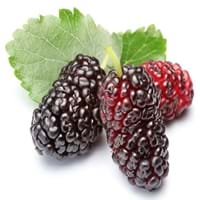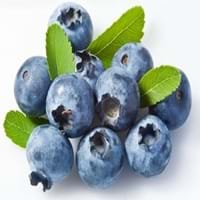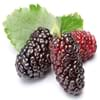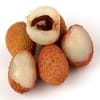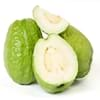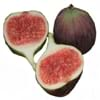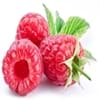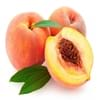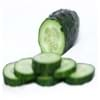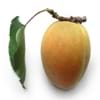Health Benefits
Anti-aging benefits, Boosts immune system, Cancer prevention, Flu treatment, Hair care, Heart care, Improves eye vision, Increases metabolic rate, Kidney stone treatment, Maintains healthy cholesterol level, Skin cleansing, Skin rejuvenation, Treatment of common cold, Treatment of skin Diseases
Cancer prevention, Cures gastro-intestinal troubles, Improves night vision, Improves stomach health, Prevents diabetes, Prevents high blood pressure, Reduces blood circulation problems
General Benefits
Boosts immune system, Controls blood sugar levels, Flu treatment, Improves eye vision, Maintains healthy cholesterol level, Treatment of common cold
Fights against infections, Helps in weight loss, Prevents blood clotting in vessels, Treatment of urinary tract infections
Skin Benefits
Anti-aging benefits, Skin cleansing, Treatment of skin diseases
Anti-aging benefits, Nourishes skin, Protects against skin damage
Hair Benefits
Protects hair, Regulates hair growth
Prevents hair loss
Allergy Symptoms
Breathing difficulty, Itching, Nasal congestion, Redness of eyes, Runny nose, Sneezing
Not Available
Side Effects
Decrease in blood sugar levels, Allergic reaction
Decrease in blood sugar levels, Diarrhoea, Dizziness, Headache, Internal bleeding, Stomach pain
Best Time to Eat
Best if taken as a breakfast (or empty stomach), As a snack in the late afternoon, Don't consume at night and before bed, Eat the fresh ones, avoid mixing with any other foods, don't eat after meal., Morning time (before lunch)
As a snack in the late afternoon, Don't consume at night and before bed, Eat the fresh ones, avoid mixing with any other foods, don't eat after meal., Morning time (before lunch)
Vitamin B5 (Pantothenic Acid)
Not Available
Vitamin C (Ascorbic Acid)
Vitamin K (Phyllochinone)
Calories in Fresh Fruit with Peel
Calories in Fresh Fruit without Peel
Not Available
Not Available
Calories in Frozen Form
Not Available
Calories in Dried Form
Not Available
Calories in Canned Form
Not Available
Not Available
Season
Spring, Summer
Summer
Varieties
Charparral, Pendula, Teas, Bellaire and Lingan
Dwarf bilberry, Piper, bog blueberry, Northern bilberry, Mountain bilberry and Oval-leaved bilberry
Color
Pink, Purple, White
Dark purple
Inside Color
Pink
Light Green
Soil Type
Clay, Loam
Moist, Well-aerated
Climatic Conditions
Sunny
Cold
Facts about
- It can take up to 10 years for a tree to produce mulberry fruit.
- Mulberry leaves are fed to silkworms to enhance silk production.
- In Germany, they say that devil uses root of mulberry tree to polish his boots.
- Bilberries are used in manufacturing of alcoholic drinks.
- They are used to improve aromas of sorbets.
- The green extract of it's leaves is used in textile industry as natural dye.
Other Countries
Colombia, Egypt, India, Indonesia, Kenya, Mexico, Pakistan, Peru, Russia, United States of America
Denmark, Finland, Iceland, Sweden
Top Importer
Not Available
United States of America
Botanical Name
Morus Alba
Vaccinium myrtillus
Synonym
Morus atropurpurea or Morus multicaulis
blaeberry, whinberry, European blueberry, whortleberry
Subkingdom
Tracheobionta
Tracheobionta
Division
Magnoliophyta
Magnoliophyta
Class
Magnoliopsida
Magnoliopsida
Subclass
Alismidae
Dillenhidae
Family
Moraceae
Ericaceae
Species
M. alba
Vaccinium myrtillus
Generic Group
Mulberry
Heath
Difference Between Mulberry and Bilberry
We might think that Mulberry and Bilberry are similar with respect to nutritional value and health benefits. But the nutrient content of both fruits is different. Mulberry and Bilberry Facts such as their taste, shape, color, and size are also distinct. The difference between Mulberry and Bilberry is explained here.
The amount of calories in 100 gm of fresh Mulberry and Bilberry with peel is 43.00 kcal and 44.00 kcal and the amount of calories without peel is Not Available and Not Available respectively. Thus, Mulberry and Bilberry belong to Low Calorie Fruits and Low Calorie Fruits category.These fruits might or might not differ with respect to their scientific classification. The order of Mulberry and Bilberry is Rosales and Ericales respectively. Mulberry belongs to Moraceae family and Bilberry belongs to Ericaceae family. Mulberry belongs to Morus genus of M. alba species and Bilberry belongs to Vaccinium genus of Vaccinium myrtillus species. Beings plants, both fruits belong to Plantae Kingdom.
